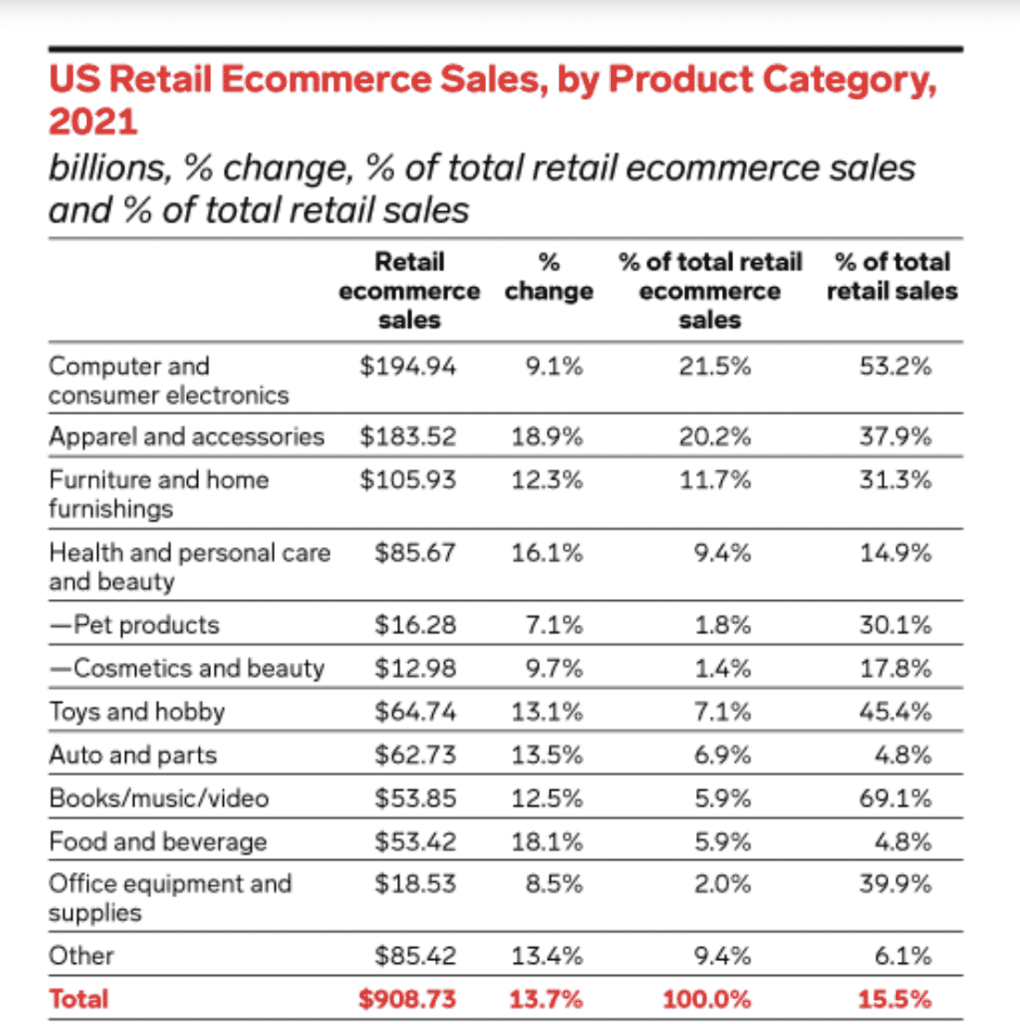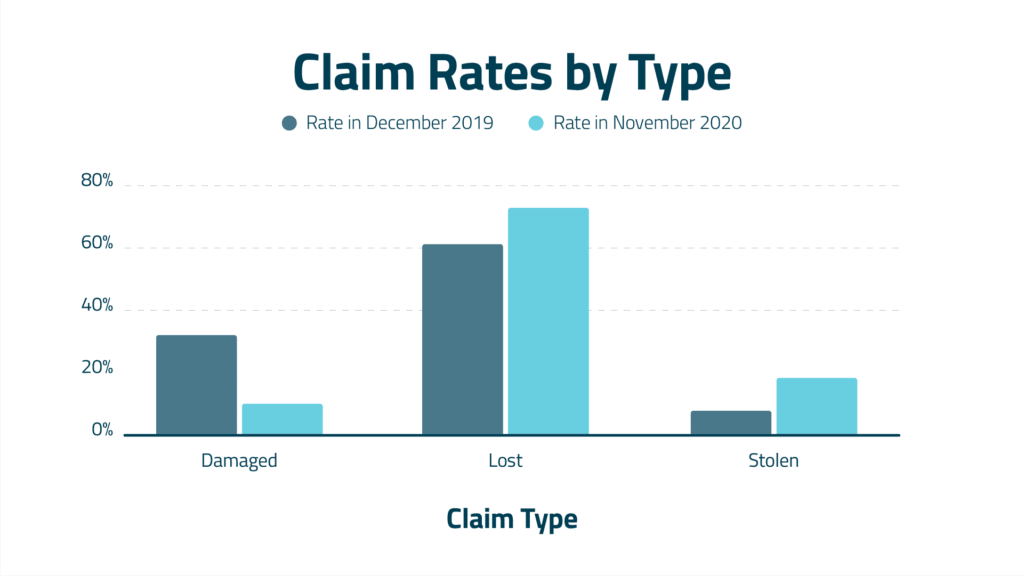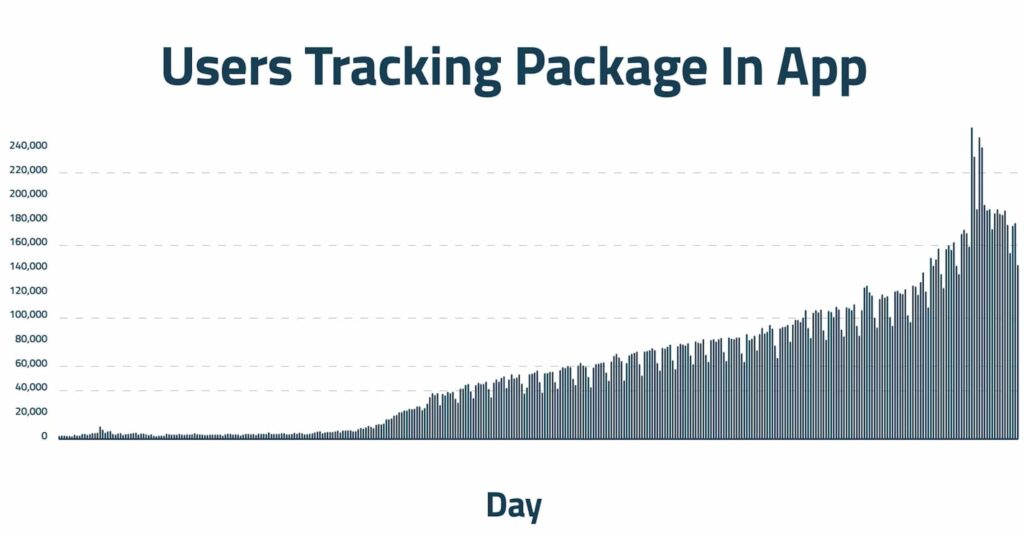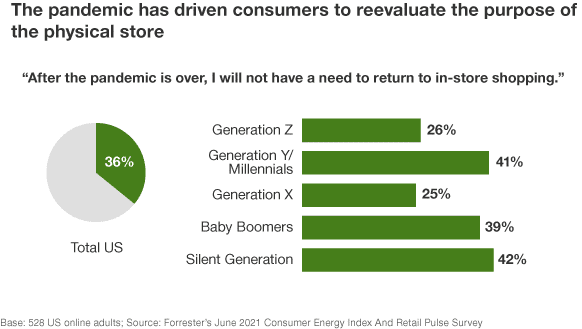Just when you thought ecommerce couldn’t have a more banner year than 2020, the year 2021 rolled up and said, “Hold my beer.” If you’re any way involved in ecommerce—whether you have a hand in running a shop, marketing a brand, building stores, and beyond—you probably noticed that every article about the industry posted bigger numbers than anyone expected.
It was an unprecedented year (we’re so sorry) for ecommerce, which meant that the 2020 holiday shopping season was forecasted to also be as wiley and unpredictable as the preceding months. And ya know what? It was.
Route is in a unique position in the ecommerce world. We’re directly connected to tens of thousands of merchants and millions of consumers. We see what today’s shoppers are buying, what keeps them engaged, and what problems impact their experiences most. This meant we had a bird’s-eye view of what transpired over the 2020 holiday season, and we have our own predictions for what’s about to hit us.
Read on to recap the weirdness that was 2020 and what we think Black Friday, Cyber Monday, and every shopping day until we ring in 2022 will look like.
Recapping the Most Unprecedentedly Unprecedented Year in Ecommerce
In the early days of 2020, the coronavirus pandemic swept the globe and left millions of people in limbo. Everything suddenly shifted, from the day-to-day of small tight-knit families to entire global economies. Milestones were moved, events were canceled, and we were all impacted in one way or another. Amidst the turmoil, however, people seemed to do what they do best: persevere.
So while stay-at-home orders were put in place and low in-store inventories made everyone a little nervous about their personal toilet paper stock, ecommerce innovators rallied.
Not only have new ecommerce tools been thrust forward and pushed public faster than anticipated, but the adoption of these tools in order to enhance and simplify customer experiences has taken off.
Examples of this growth spurt are pretty much everywhere. Shopify’s merchant count continues to grow, and it pushed the platform’s gross profit dollars to grow 91% in the fourth quarter of 2020—$504.4 million compared with $263.9 million just a year earlier. Email marketing automation tool Klaviyo saw its customer base double throughout 2020. And all those Buy Now, Pay Later tools that seemingly came outta nowhere are predicted to hit $100 billion in retail purchases by the end of 2021, up from $24 billion in 2020.
Not only are there more merchants, more platforms, and more adoption of ecommerce tools, there are more consumers than ever spending more money online. Phew! In 2020, 256 million people bought stuff online in the United States. That number ticked up to 263 million in 2021 and is predicted to creep past 290 million by 2025. The (pandemic-induced) online-first behavior is also to blame for online sales continuing to grow. What’s more is that 2021 proved that this ecommerce attitude is here to stay.
2020: The Year That Pushed Ecommerce into the Future kicking and Screaming
The pandemic speedily ushered ecommerce into an entirely new era, ready or not. As brands scrambled to catch up to new product demands, payment options, on-site experiences, and more, consumers were doing quite a bit of changing on their own.

As everyone settled into the pandemic way of living in 2020, certain ecommerce categories soared while others took a hard hit. Verticals that appealed to a life lived within the confines of one’s house had knockout ecommerce shares of retail sales in 2020—books, computers, and toys had massive online surges. Other industries, like auto parts and food, were less popular online purchases.
But even as stores started reopening to in-person shoppers in 2021, the disparity between verticals has remained the same, with popular ecommerce categories holding onto high shares of total retail sales. However, categories such as travel or out-of-home consumption took another hit as the Delta variant roared across the world.
People buying the same stuff over the past year isn’t the only thing that’s held strong. Another trend that’s firmly not a flash in the pan is online shopping as a whole. In 2020, ecommerce saw an influx of people who haven’t ever shopped online, essentially pushing more consumers to adopt ecommerce. Even if these consumers were slow to adopt online shopping before 2020, it’s clear that they aren’t going to stop as the pandemic ebbs, vaccinations rise, and brick-and-mortar stores return to operating normally.
In essence, more consumers than ever have gotten a taste of the ease and convenience of shopping online and there ain’t no going back.
In the US, nearly 80% of consumers cranked up their online shopping and 89% plan to do just as much (or more) well past the point of stores fully reopening. With coinciding increases in the number of brands available to consumers and online shopping overall, there’s bound to be a shift in brand loyalty and the drivers behind it.
Since the coronavirus pandemic started, 40% of consumers say they’ve switched brands, just over 30% have opted to shop at different stores or websites, and nearly 30% have taken advantage of different shopping methods, like curbside pickup.
The reasons behind changing brand loyalty and experiences throughout the past year vary greatly. Purpose-driven brands had a massive surge in appeal, with sustainability and inclusivity leading the way for shifting loyalty. It’s also clear that consumers took a liking to brands that offered a variety of shopping experiences, like livestream shopping or more delivery options.
It’s no longer enough for online retailers to hang their hat on low prices or fast shipping. The influx of online shoppers, increased online spending, and more ecommerce competition than ever has resulted in things like brand mission and customer experience guiding shopping behavior.
It seemed like 2020 made the ecommerce industry adapt to pandemic living in a frantic and rushed way, but perhaps it’s exactly the evolution consumers have been wanting for a long time but simply weren’t getting. Now, the next big question is how will this new ecommerce landscape impact the 2021 holiday shopping season?
Route’s Big Black Friday and Cyber Monday 2021 Predictions
So, what actually happened? Well, in 2020, people spent $792 billion online in the United States, accounting for 14% of total retail sales (remember, total retail sales also includes big things like cars, gas, etc.). That level of penetration is double what it was just five years earlier.
Of that nearly $800 billion spent online throughout 2020, $9 billion was spent during Black Friday and $10 billion was spent during Cyber Monday. Those fat stacks represent year-over-year increases of 21.6% and 24%. Plus, this surge in spend boosted US ecommerce shipments up 71% compared with 2019.
Route also found that lost and stolen package claims rose considerably in 2020, while damaged deliveries were down compared with 2019. Metropolitan areas saw spikes in claims, with New York City, San Diego, and Philadelphia taking the cake. And as far as package carriers go, FedEx and UPS had the lowest claim rates and were the surest bet for a seamless gift-giving holiday. Keeping an eye on packages throughout the holidays also took precedence—the Route App saw massive spikes in shoppers using the tracking feature throughout the holiday shopping season.




2020 Holiday Recap
Black Friday: $9B, up 21.6%
Cyber Monday: 24%, up 24%
Shipments up 71%
Metros saw boosts in lost or stolen goods
FedEx and UPS had fewest claims
Consumers tracked holiday packages
The changes that consumers had to make as the pandemic settled in for the long haul were monumental for the ecommerce industry. The entire business evolved seemingly overnight, and the numbers forecasted 10 years from now were suddenly happening by the end of 2020.
More people turned to ecommerce for their holiday purchases than ever before, but that also lead to overwhelming surges in package volume for shippers, claim rates for lost or stolen packages, and the need for a better post-purchase experience and transparency through tracking.
Black Friday and Cyber Monday 2020 were a modern-day wild west, with no one knowing exactly how everything was going to play out. But armed with the insights of last year, let’s try and predict where 2021 holiday shopping will take consumers and the industry as a whole.
2021 Black Friday and Cyber Monday Predictions
Building off of last year’s proprietary data, stats collected throughout the pandemic, and a variety of information gathered throughout 2021, we can start to put together some predictions. While the reality of Black Friday and Cyber Monday 2021 remains to be seen, it’s not as wiley a shopping season as last year’s. Wielding these insights and some of your own store’s data should do the trick in nailing out these last-minute preparations for a smooth end of the year.
1. Shipping and Delivery Will Still Be Severely Overwhelmed
Last year, the reliance on ecommerce for holiday shopping caused a huge influx in shipping volume—and a severe struggle for carriers to keep up. The unpredictable nature of the pandemic meant carriers had a hard time pivoting and locking down efficient methods of delivering waaaay more packages than usual.

Even though we’ve been living in the ecommerce-reliant pandemic world for nearly two years now, the shipping issues persist. UPS predicts that even with early and comprehensive planning—rental equipment, extra employees, leased aircraft—package delivery demand will still exceed capacity by roughly 5 million packages per day. This peak season’s shipping volume in the US is expected to be up 66% from last year, which was already overwhelming. The cause for the persistent shipping struggle isn’t just pinned on people shopping more online this year, though. There are a lot of social and economic issues keeping consumers from seamless delivery.
The US is in the throes of a widespread labor uprising with calls for better benefits and higher minimum wages across industries. Strikes and career mobility have meant many roles along the shipping chain simply don’t have people to fill them as a result. Inventories have been difficult for merchants to manage as global supply chain issues keep tossing wrenches into plans. The list of woes is long this year, and it’s all impacting package delivery.
If you want to ensure shipping won’t put a damper on your holiday season, check out the deadlines to order your gifts from UPS, USPS, and FedEx. The rule of thumb for 2021 is to shop early (like right now) and hope your stuff arrives on time.
2. Package Thieves Are Here to Stay
Based on last year’s package claims and an uptick in package theft, we’re predicting that porch pirates will be as fervent as ever in 2021. Supply chain issues and low inventories mean that thieves dealing in selling or pawning goods could also see a higher return for their devious efforts. Low supply and high demand for hot commodities and tired house-bound consumers means many goods could go for a lot of dough in resale.
However, there is also a lot of technology available to help combat this unsettling trend. There are more surveillance solutions out this year, from Ring doorbells to Wyze outdoor cams and floodlights, thieves could be deterred by the threat of being caught in the act. Or couple your outdoor security system with your very own storage locker that will keep everything safe and secure until you can get to it. Similarly, take advantage of delivery pickup sites like Amazon lockers around your city.
If none of those solutions fit your life—whether high cost scraps the idea or your apartment building won’t let you mount your own security cameras—then consider joining the Route network of brands. Ecommerce shoppers tracked all of their purchases with the Route tracking app in droves during the 2020 holidays, indicating it’s a feature that consumers crave.
Even if your customers are outfitted with all the thief deterrents available, using Route Track empowers them to watch their packages at every step along the delivery journey and get updates the second something is delivered. The faster someone can retrieve their package from the doorstep, the less time a thief has to nab it.
3. A Great Customer Experience Is the Holy Grail
Consumer attitudes have changed over the pandemic. The trend of values-driven spending isn’t about to ebb this holiday season, and consumers are putting their money in brands that offer more than a cheap price tag. When it comes to considering the leading drivers of customer value in 2021, giving customers some control over their package delivery ranks above product price, availability, and quality.

A great customer experience isn’t just a smoother on-site journey or more Buy Now, Pay Later options on your checkout page. Instead, customers want to be cared for beyond checkout. Especially during the stressful holiday season, your customers want to know that your store is on top of things, clear and proactive communication about their purchases, and quick solutions should a claim have to be filed.
Also consider the impact of in-store shopping this season. More stores are resuming business relatively normally, and that makes a case for a need for an even tighter bond between online and in-person shopping. While many shoppers will head back to the stores this holiday season, almost half aren’t excited about it. This puts the burden on the brands to get creative and rethink the experience they offer across every channel to ensure it’s meeting current consumer behaviors and needs.

That’s a tricky ball to juggle, but it can be done. Appeal to people who don’t want to go back to a physical store by crafting a comprehensive online experience from product discovery through package delivery. Adding a post-purchase suite of tools like Route takes the weight off your shoulders by tackling the trickiest and most overlooked part of the journey: the post-purchase experience.
Route empowers ecommerce brands to give priceless peace of mind to consumers throughout the holidays. Not only does the platform let shoppers watch their package go from warehouse to mailbox, but it also gives them an easy way to self-resolve issues instead of sitting in customer support purgatory.
Route Protect makes it possible for customers to quickly reorder purchases that get stolen, arrive damaged, or become lost in the abyss. This automated reordering strategy simultaneously takes a massive weight off of customer support teams. Fewer tickets in your support queue means happier employees and happier customers.
Strong, memorable customer experiences aren’t a flash in the pan. This trend is here for the holidays and far beyond. Customer behaviors have changed to favor brands that show authentic care and support, and merchants that include those aspects in every part of the customer journey will be the ones to thrive. Whether you’re running a purely DTC shop or are trying to manage a hybrid of strategies for brick-and-mortar and online, solutions exist to make your experience one that people come back for.
Buckle Up for the 2021 Holiday Shopping Season
Black Friday and Cyber Monday 2020 taught us a lot about the industry, consumers, and evolution that needed to happen in ecommerce. As the 2021 holiday season approaches, it’s clear the industry is trying to catch up while facing new problems that impact shopping, shipping, and customer experiences.
While predictions of broader shipping delays, supply chain issues, and package thieves aren’t the most optimistic forecasts, just remember that solutions like Route can lend comfort and care to every customer. Ecommerce has changed for good, and with the pandemic, long-lasting growing pains are a given.
No matter what happens this year, though, remember that getting a package is just the cherry on top. The joy and essence of the holiday season costs absolutely nothing and doesn’t need to be shipped from anywhere because it’s already within you. Don’t mind us getting a little sappy over here—it’s all true. Whether everything that’s ordered this year arrives unscathed or not, remember that the reason for the season is about simply celebrating the people around you.